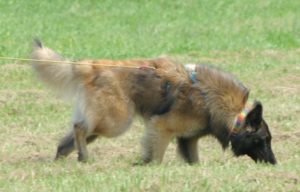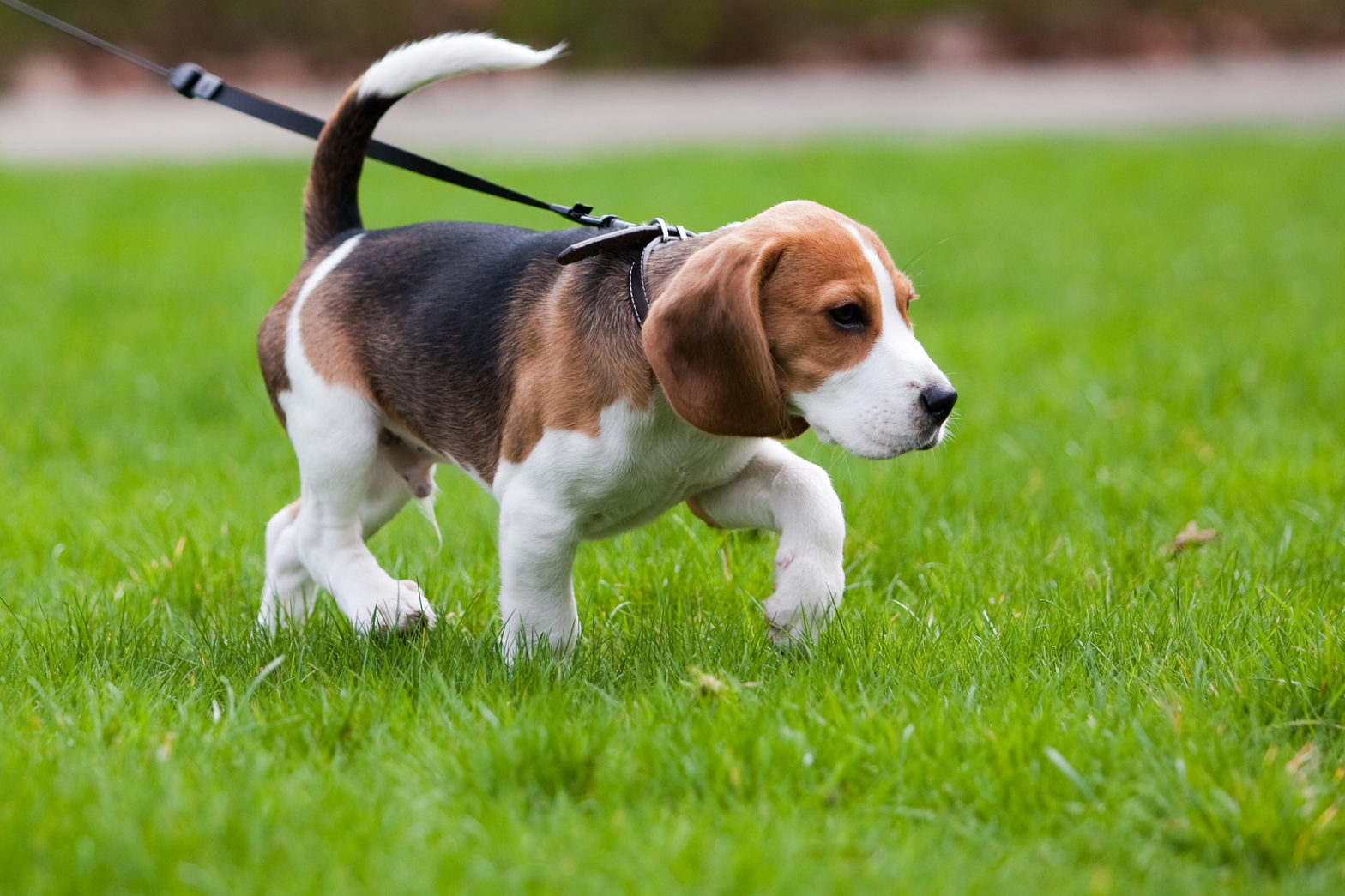Does your dog like to sniff? And does she like playing games with you and learning new things? Then tracking is a sport for you!
Tracking helps to build confidence in shy or anxious dogs because it is a natural behavior and one of the few sports where your dog calls the shots. Humans have a pretty pathetic sense of smell, so it is up to your dog to show you where the track goes.
Tracking is also great low-impact exercise for both you and your dog. It gets both of you out walking, and processing smells will wear your dog out faster than walking alone.
And it’s just plain fun! Tracking is a wonderful opportunity to bond with your dog over an activity that she naturally enjoys and is good at.
What You’ll Need
- Harness that doesn’t restrict your dog’s shoulder motion. Tracking is one of the few times when pulling is encouraged, and you want your dog to be able to move freely.
- Leash or long line. Start out with a 6-foot leash, but you can graduate to a longer line as your dog gains confidence and skill.
- A flag to mark the start of your track (and maybe some to mark turns as you progress)
- Items for your dog to find, such as socks, gloves, or dog toys (in tracking terms, these items are known as “articles”)
- Treats
- A field or large yard to work in
Getting Started
All dogs already know how to track. You just need to teach your dog to focus on and stick to the scent you indicate.
- Place your start flag and walk about 20 feet, dropping a small piece of food for each step. Place your article at the end with a jackpot of treats. Then loop back around to get your dog.
- Put the harness and leash on your dog and lead her up to the start flag.
- Point to the ground to show her the first treat, and tell her, “Go find!”
- Follow along as she follows the trail of treats, encouraging her as needed. If she goes off track, just wait until she works her way back.
- Celebrate when she “finds” the article! Pet her, play with article, and let her eat the treats.
- Repeat a couple more times.
As your dog figures out the game, you can space out the treats you drop more and more. Many dogs will even start going past treats because tracking is rewarding in and of itself. Always reward and celebrate at the article to keep her psyched about finding her prize!
Gradually increase the length of your track, and introduce turns. Place treats before and after your turns at first to guide her through, then phase those out like you did in the beginning. Your dog probably won’t do textbook turns every time – she will go past the turn, circle around sniffing, and then commit to the track. This is fine! Stand still and let her search, then walk along behind her when she figures it out.
As she gets more experienced, you can start “aging” your track by walking the path and then letting it sit before you come back and run it with your dog. You can also ask a friend to lay a track for you!
While grass is the easiest surface to start on because it holds scent really well, you can also track over dirt and pavement. Help your dog the first couple times working on a new surface.
Praise when she is on the track, especially if she pulls to tell you to follow. She will quickly learn that pulling is allowed when she’s wearing her tracking harness, and not when she isn’t.
The simplest description of tracking is recreational search work. You can teach your dog to follow your scent trail and find things that you leave behind, rewarding for a job well done. If you really get into it, you can train for and earn tracking titles through organizations such as the American Kennel Club or Australian Shepherd Club of America (all breeds and mixes welcome!). Tracking is a great activity for dogs of all ages and sizes, because it is low-impact, on leash, and capitalizes on your dog’s amazing sense of smell. Tracking can be done anywhere, but if you’re short on good spaces to practice where your dog won’t be disturbed by the presence of other dogs or humans, you can check Sniffspot.com to see if there are any private areas that might meet your needs.
Happy tracking!
This article was reviewed/edited by board-certified veterinary behaviorist Dr. Kenneth Martin and/or veterinary technician specialist in behavior Debbie Martin, LVT.








